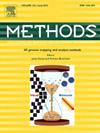Integrated isotyping and CDR identification of mouse monoclonal antibodies using multiplex RT-PCR
IF 4.3
3区 生物学
Q1 BIOCHEMICAL RESEARCH METHODS
引用次数: 0
Abstract
The complementarity-determining regions (CDRs) of monoclonal antibodies are essential for antigen recognition and antibody engineering. Accurate determination of CDR sequences typically requires cDNA synthesis from hybridoma-derived mRNA followed by sequencing of the variable regions. However, murine monoclonal antibodies are composed of diverse heavy and light chain isotypes, necessitating prior isotype determination to select appropriate primers for cDNA synthesis. Conventional workflows rely on immunoassays for isotype identification, which adds time and complexity. Here, we developed a streamlined, isotype-independent workflow for the molecular characterization of mouse monoclonal antibodies. A multiplex set of reverse transcription primers (Multiplex-RT) incorporating a universal adaptor sequence was designed to enable cDNA synthesis across major murine isotypes without prior isotype knowledge. Variable regions were subsequently amplified by isotype-specific PCR (Iso-PCR), allowing identification of antibody isotypes, IgG subclasses, and CDR sequences in a single workflow. We applied this method to characterize a murine antibody targeting the astrocytic membrane protein MLC1 and engineered a human-mouse chimeric antibody by grafting murine CDRs onto a human IgG1 backbone. The chimeric antibody retained antigen-binding activity, as demonstrated by immunoprecipitation and immunoblotting. This workflow provides a rapid and reliable strategy for sequencing and isotyping mouse monoclonal antibodies and facilitates downstream applications in antibody discovery, recombinant production, and engineering.
利用多重RT-PCR技术对小鼠单克隆抗体进行综合等型和CDR鉴定
单克隆抗体的互补决定区(cdr)在抗原识别和抗体工程中是必不可少的。准确测定CDR序列通常需要从杂交瘤来源的mRNA合成cDNA,然后对可变区域进行测序。然而,小鼠单克隆抗体由多种重链和轻链同型组成,需要事先确定同型,以选择合适的引物进行cDNA合成。传统的工作流程依赖于免疫测定进行同型鉴定,这增加了时间和复杂性。在这里,我们开发了一种精简的,与同型无关的工作流程,用于小鼠单克隆抗体的分子表征。设计了一套包含通用适配器序列的多重反转录引物(multiplex - rt),可以在没有事先同种型知识的情况下跨主要小鼠同种型进行cDNA合成。可变区域随后通过同种型特异性PCR (Iso-PCR)扩增,允许在单一工作流程中鉴定抗体同种型,IgG亚类和CDR序列。我们利用这种方法表征了一种靶向星形细胞膜蛋白MLC1的小鼠抗体,并通过将小鼠CDRs移植到人IgG1骨架上,构建了一种人-小鼠嵌合抗体。嵌合抗体保留抗原结合活性,如免疫沉淀和免疫印迹所示。该工作流程为小鼠单克隆抗体的测序和同型提供了快速可靠的策略,并促进了抗体发现,重组生产和工程的下游应用。
本文章由计算机程序翻译,如有差异,请以英文原文为准。
求助全文
约1分钟内获得全文
求助全文
来源期刊

Methods
生物-生化研究方法
CiteScore
9.80
自引率
2.10%
发文量
222
审稿时长
11.3 weeks
期刊介绍:
Methods focuses on rapidly developing techniques in the experimental biological and medical sciences.
Each topical issue, organized by a guest editor who is an expert in the area covered, consists solely of invited quality articles by specialist authors, many of them reviews. Issues are devoted to specific technical approaches with emphasis on clear detailed descriptions of protocols that allow them to be reproduced easily. The background information provided enables researchers to understand the principles underlying the methods; other helpful sections include comparisons of alternative methods giving the advantages and disadvantages of particular methods, guidance on avoiding potential pitfalls, and suggestions for troubleshooting.
 求助内容:
求助内容: 应助结果提醒方式:
应助结果提醒方式:


